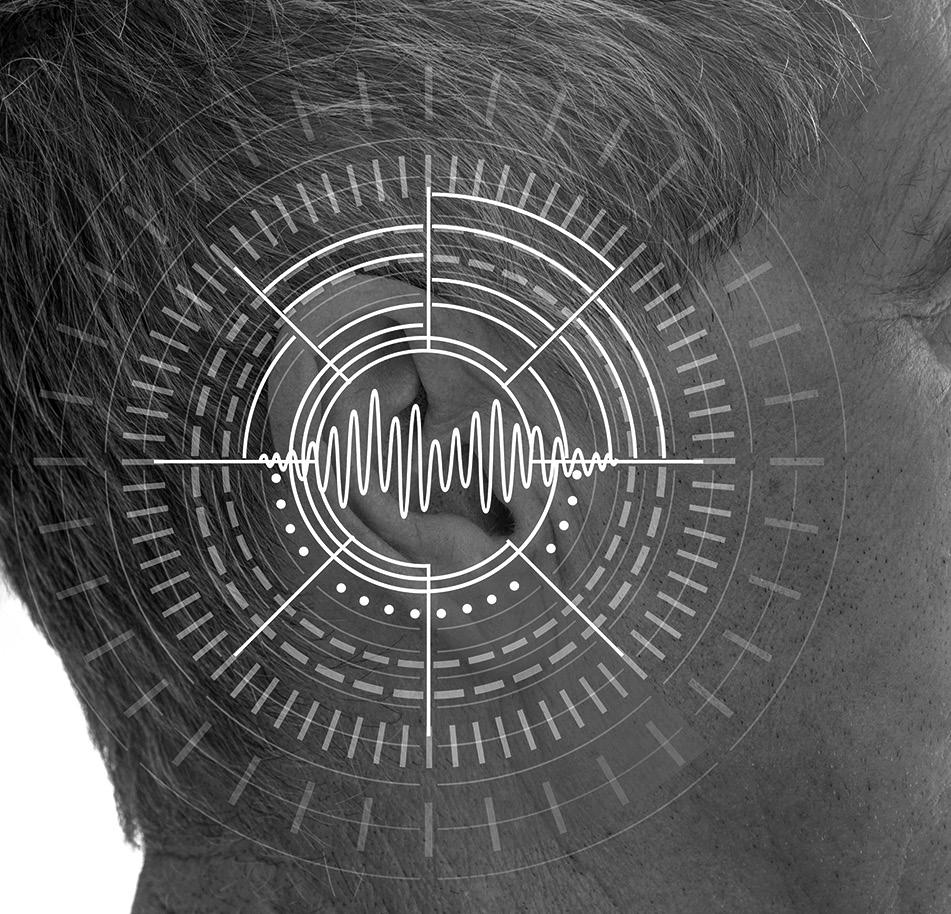Health Quarterly July 2023

A Special Supplement to the




Regular visits to the doctor for well checks are the cornerstone of maintaining good health.
While many people seek medical attention only when they are unwell, the significance of routine check-ups cannot be overstated. These preventive appointments, often referred to as well visits or physicals, offer a range of benefits that extend beyond immediate health concerns.
Harvard Medical School recommends having one of these visits at least annually. Most insurance policies cover them and Medicare makes them available at no cost.
One of the primary reasons well visits are crucial is their role in early detection and prevention of illnesses. During these appointments, health care professionals conduct comprehensive assessments of your overall health, including physical examinations, medical assessments of your overall health, medical history reviews and routine screenings.
By monitoring key health indicators and identifying potential risk factors, doctors can detect health issues at their nascent stages. Early detection allows for timely intervention and treatment, which can significantly improve outcomes and even save lives.
Well visits also offer an opportunity to receive vaccinations and immunizations, protecting you from preventable diseases and reducing the
risk of outbreaks within communities.
During well visits, you can discuss ageappropriate screenings such as colorectal cancer screens, mammograms and prostrate screenings.
Regular well visits foster
an ongoing relationship between you and your health care provider. Continuity of care is vital as it enables doctors to better understand your unique health needs, lifestyle and medical history. By developing this rapport, you can receive personalized health care recommendations

tailored to your specific circumstances.
Open communication with your health care provider during well visits allows for the discussion of any concerns, questions or changes in your health status. This interaction empowers you to take an active role in your own health and make informed
Well visits extend beyond the prevention and treatment of illnesses. They also focus on promoting overall wellness. Health care providers often use these visits as an opportunity to discuss healthy lifestyle choices such as exercise, nutrition, stress management and mental health.
They can provide guidance on disease prevention, smoking cessation, weight management and more. By addressing these aspects, well visits empower individuals to adopt healthier habits and make positive changes that enhance their quality of life.
For individuals living with chronic conditions, well visits play an important role in managing their health. Regular monitoring and check-ups enable health care providers to assess the progression of the condition, adjust treatment plans and provide necessary support and education.
decisions about your well-being.
An ongoing relationship lets your health care provider track important health statistics related to cholesterol, weight, blood pressure and blood sugar before they become issues.
Health care providers can help individuals maintain optimal health and prevent further complications by addressing the concerns as they emerge. Well visits become an essential part of managing chronic conditions, fostering wellbeing and improving the overall quality of life for those affected.
Imagine a silent threat permeating your living space, silently wreaking havoc on your health without you even knowing it.

That’s what can happen with common household toxins that negatively affect your health. Limiting these toxins can promote a healthier living environment and provide you with a breath of fresh air.
Common toxins include volatile organic compounds (VOCs), formaldehyde, lead and cleaning product chemicals. The American Lung Association identifies common cleaning supplies and household products such as aerosol spray products (health, beauty and cleaning products), air fresheners, chlorine bleach, detergent and dishwashing liquid, dry cleaning chemicals, rug and upholstery cleaners, furniture and floor polish and oven cleaners.
The chemicals released when using these products can cause allergic reactions, headaches and chronic respiratory problems. There are links to asthma and other respiratory illnesses.
Some products can cause rashes when you come into skin contact with them. Such things as lead can contribute to all sorts of health problems from high blood pressure, fertility problems, muscle and joint pain and cognitive issues.
Some fragrances, pesticides and stainresistant coatings can raise the risk for cancer, reduce fertility and contribute to developmental issues.
The importance of clean indoor air took on new importance during the COVID-19 pandemic as it helped to reduce its spread. However, clean indoor air also improves productivity and mental processing, reduces the spread of other airborne diseases and decreases environmental triggers for such things as asthma and allergy.
Sources of indoor air
pollutions can include tobacco smoke, household products and building materials. You can improve your indoor air quality by ensuring you have proper ventilation, cleaning on a regular basis and using air purifiers or plants that naturally filter the air.
Choose non-toxic alternatives for common
for human use and the environment at www.epa. gov/saferchoice
Consider creating homemade cleaning solutions using simple ingredients such as vinegar, soap and baking soda.
Make sure whenever you clean that the area is well-ventilated. Open your windows —not only when you clean, but whenever the weather permits so you can get fresh air. Regularly clean dust and mold-prone areas. Remove your shoes when you enter the house so you don’t track toxins in from outside.

Limit your use of
essential oils and candles. When you are redecorating, use natural materials for furniture, bedding and flooring. Search out low-VOC paint. Schedule routine and regular testing for radon, carbon monoxide and other potential hazards. Keep your home’s humidity level at 30% to 40% to help prevent mold. The constant, lowlevel exposure to electromagnetic fields can affect your health, so choose hard-wired technology over wireless and use radiation-blocking cases on your devices. Turn off your WiFi when it is not in use.
household products, including cleaning supplies, personal care items and home furnishings. This can take a little research because not all products labeled “green” or “natural” are necessarily safe. Read the labels carefully and follow any instructions.
Find out which products truly are eco-friendly and fragrance-free. The U.S Environmental Protection agency lists cleaning products that are safer
People who experience chronic pain are eager to find ways to manage it and many turn to alternative treatments.
Acupuncture has been in use in some form for at least 2,500 years. Acupuncture involves inserting thin needles into specific points on the body. They are most often manipulated by hand, though some practitioners use heat or small electrical currents.
With its accelerated use, more insurance companies are starting to cover acupuncture services. Even Medicare covers its use for treat lower back pain as of 2020.
The Mayo Clinic explains that there are two approaches to acupuncture. Traditional Chinese Medicine uses it to balance to flow of energy or life force, which is known as chi or qi (chee), through the meridians in a person’s body. The needles are inserted along the meridians to help re-balance energy flow. Western acupuncturists use needles to stimulate nerves, muscles and connective tissue to boost the body’s natural painkillers.

Acupuncture is used in 103 of 129 countries that reported data, according to the National Institutes of Health. Scientists don’t fully understand acupuncture, but they have learned a few things through research. It appears to affect nervous system function as well as having direct effect on the tissues where the needles are inserted, especially
connective tissue.
The NIH reported that people with back pain, osteoarthritis and headaches continued to show beneficial effects of acupuncture for a year after the end of treatment. Acupuncture may help relieve joint pain associated with the drugs taken by people with breast cancer.
In addition to pain relief, there is some evidence that acupuncture helps relieve seasonal allergy symptoms, labor pain, dental pain, menstrual cramps, stress incontinence in women and nausea and vomiting associated with cancer treatment. It also helps relieve allergy symptoms but does not improve lung
function.
Find a qualified and licensed acupuncturist. There are few complications reported from acupuncture except where nonsterile needles were used or treatment was improperly delivered.
at needle insertion sites. Tell your provider if you have a bleeding disorder, are taking blood thinners or have a pacemaker. Also, acupuncture is thought to stimulate labor and could result in a premature delivery.
Seek recommendations from people you trust and your doctor. Ask how much the service will cost, what’s involved and whether they accept your insurance.
Your provider is likely to have their own unique style. They may ask you questions about your symptoms and lifestyle. Before starting, they might examine parts of your body that hurt, what your tongue looks like, the color of your face and the characteristics of your pulse.
Sessions vary in length. You’ll develop a treatment plan with your provider based on your condition. Sometimes plans involve one to two treatments a week and involve six to eight treatments, according to the Mayo Clinic.
When done wrong, acupuncture can cause infections, punctured organs and injury to the central nervous system.
The U.S. Food and Drug Administration requires that acupuncture needles be sterile and used only once.
Side effects can include minor bruising or soreness
You may be asked to undress and wear a gown or drape yourself with a towel or sheet. You’ll lie on a padded table while thin needles are inserted at strategic points. Most people report little discomfort or say they don’t feel it at all. Most treatments use five to 20 needles.
The provider may gently move or twirl the needles or apply heat or mild electrical pulses while the needles are in place, which can last for 10 to 15 minutes before they are removed.

human body and 20% of our genes are involved in the human inner ear. Scientists estimate that her are 150 to 200 genes that when damaged, could lead to hearing loss. Some genetic hearing losses are medically treatable some are not.
Other causes of hearing loss are caused by injury, ototoxicity, medications, and infectious disease.
As an audiologist, the most common complaint I hear from my patients is, “I can hear but I cannot understand “. We like to think that hearing aids are a cure for all complaints like this and in many cases can provide improved communication, but hearing aids cannot
“cure” certain auditory dysfunction such as cognition. Our ears are sound processors, meaning our ears can only receive incoming sounds (hear the sounds) but it is the auditory nerve and central auditory system “understanding” takes place, which is cognition. Hearing aid use have proven to help mitigate cognitive decline and dementia in the treatment of hearing loss which is the 3rd most common medical fear in adults. Bottom line: get a baseline hearing test. It could improve your lifestyle and health risk.

Hearing loss is one of the most common problems in adults (only arthritis and hypertension are more common) and among the medical conditions that worry most adults is hearing loss, stoke and cognitive decline. Several studies have concluded that hearing is the most
untreated problem in people over 50 years of age.
The most common causes of hearing loss are:
Presbycusis The aging process is the most common cause of hearing loss. The typical loss develops so slowly that most people do not even notice and change day to day or even year after year. And it is not the loudness of speech that

is affected at first Speech clarity is affected more than loudness.

Noise The world is a very noisy place. Exposure to even moderate levels of noise over a long period of time, or to brief high intensity sounds can lead to sensorineural hearing loss which is a permanent and irreversible. The loss is often accompanied by tinnitus (ringing, hissing or

other noises in the ear and is also untreatable. The best prevention of preventing noise induced hearing loss is to wear hearing protection when working around noisy machinery, using guns, loud music, and lawn equipment.
Genetics Inherited sensorineural hearing loss can occur at any age. The ear is the most genetically complex organ in the
In the intricate tapestry of our genes lies the key to unraveling the mysteries of our health.
Genetic screening is the gateway to invaluable knowledge that helps us manage our health and detect genetic conditions early. Genetic testing, according to the Centers for Disease Control and Prevention, looks for changes, mutations and variants in a person’s DNA.
Screening purposes can include carrier screening, prenatal screening and predictive screening. Carrier screening helps identify individuals who could be a carrier of a recessive genetic disorder or a gene mutation. Prenatal screening is performed during pregnancy to assess the risk of genetic conditions or birth defects in a developing fetus. Predictive screening analyzes an individual’s DNA to identify the risk of developing specific diseases or conditions such as cancer, cardiovascular diseases or neurodegenerative disorders.
All types help identify potential genetic risks and empower you to make informed decisions about your health.
There is a difference between clinical and directto-consumer (DTC) genetic tests. DTC tests can provide you with information about your ancestry, responses to medications or risks for developing certain conditions. They can inform lifestyle choices and things to discuss with your doctor but should not be

used on their own to make medical decisions.
Clinical genetic tests are ordered by doctors for specific medical reasons. There is no single genetic test that can detect all genetic conditions. Types of clinical genetic tests include single gene tests that help identify a specific condition or syndrome such as sickle cell disease. Panel testing groups several categories together to search for such things as cancer, epilepsy or muscle tone. Large-scale genetic or genomic testing is ordered for people with complex medical histories and looks at whole exomes or all of a person’s DNA.
Genetic screening can help you detect certain conditions early which allows you to take proactive measures to manage or prevent them. They can also assist you in family planning and reproductive
choices by identifying the risk of passing on inherited conditions. There is also a potential for your doctor to help you develop personalized medicine and targeted treatments based on your
genetic profile.
Genetic information is highly personal and sensitive and there is a potential for misuse or unauthorized access to individuals’ genetic data. Preventing this is especially important to avoid genetic discrimination in which employers or insurers might use test results to deny employment, health coverage or other opportunities.

Test results can cause anxiety, stress or psychological distress.

Genetic counseling before and after testing can help. It assists you in
understanding the results more fully and coping with the implications of what you learn.
The medical profession is struggling with providing equitable access to screening services. They are determining how to offer equal access to healthcare and good health outcomes based on socioeconomic factors, geographical location and other barriers. Genetic screening during pregnancy raises complex ethical considerations. Screening results may inform decisions about continuing or terminating a pregnancy, which involves personal, cultural, religious and ethical values that vary among individuals and communities.